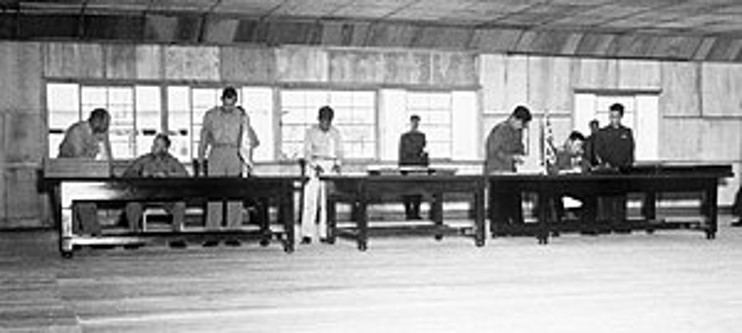Korean War Armistice
July 27, 1953

After approximately two years of bloody stalemate, the United Nations Command, North Korea, and China all sign an armistice agreement to cease offensive military operations. The agreement does not formally end the war, but it establishes a Korean Demilitarized Zone (DMZ) between North and South Korea, dividing the Korean peninsula roughly in half.
In three years of fighting, approximately 36,500 American service people have been killed in Korea, and over 103,000 have been wounded. As many as two million Koreans have been killed or wounded, most of whom are civilians, though the totals from North Korea are less certain. Millions more have had their homes, families, and communities destroyed. An estimated 400,000 Chinese soldiers have also been killed.
Leaders in the United States fear there will be additional Chinese and Soviet military interventions in Asia, especially in the ongoing Indochina War between French colonial troops (supported by the United States) and the Viet Minh (supported by China and the Soviet Union). President Dwight D. Eisenhower notes the likelihood of the so-called domino effect—that the loss of one nation to Communist domination will inevitably lead to the Communist domination of its neighbors—as a reason to remain committed to supporting a non-Communist East Asia and to exert American influence in the region.1